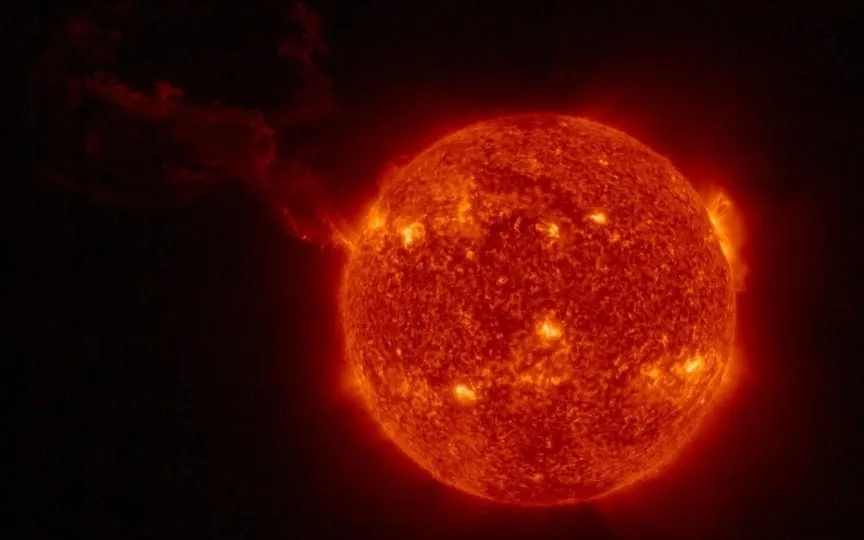Details of two sunspots that NASA warns could release M-class solar flares towards Earth
Solar activity has been consistently bombarding Earth in recent months. In July, it was discovered that 2023 had already surpassed a 21-year record for the highest number of sunspots, exceeding scientists’ initial predictions. The increasing number of sunspots directly correlates with the intensity of the solar peak, indicating a higher likelihood of solar storms. These storms are triggered by the release of coronal mass ejections (CME) particles during solar eruptions, also known as solar flares, which originate from the unstable magnetic fields within sunspots. In a noteworthy development, the NASA Solar Dynamics Observatory (SDO) has identified two hazardous sunspots, both capable of emitting M-class solar flares towards Earth.
The threat of M class solar flares
According to a report by spaceweather.com, sunspots AR3511 and AR3513 have been found to have unstable “beta-gamma” fields. This simply means that there is acceleration at the top of the corona loops. Both sunspots can shoot an M-class solar flare towards Earth. According to NASA, M class solar flares are moderate in intensity and can cause short radio outages. This is because when solar particles hit Earth, radio communications and the electrical grid are affected as they hit the planet’s magnetic field.
The report states that “Sunspots AR3511 and AR3513 have ‘beta-gamma’ magnetic fields that contain the energy for M-class solar flares.
Technology at NASA’s Solar Dynamics Observatory
The NASA Solar Dynamics Observatory (SDO) uses three very important instruments to gather information about various solar activities. They include the Helioseismic and Magnetic Imager (HMI), which measures high-resolution longitudinal and vector magnetic fields across the entire visible solar disk, the Extreme Ultraviolet Variability Experiment (EVE), which measures the sun’s extreme ultraviolet radiation, and the Atmospheric Imaging Assembly. AIA), which provides continuous full-disk observations of the solar chromosphere and corona in seven extreme ultraviolet (EUV) channels.




